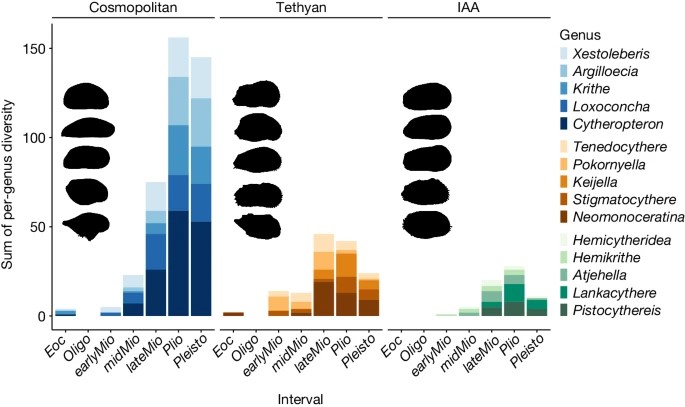Research Highlight from Asia - Unveils the Evolutionary History of Marine Biodiversity Hotspot
A study recently published in Nature has shed light on the Cenozoic history of the Indo-Australian Archipelago (IAA), a region renowned as the global epicenter of marine biodiversity. The research, led by Skye Yunshu Tian from the University of Hong Kong and international collaborators, presents a high-resolution reconstruction of the IAA's diversity dynamics over the past 25 million years, using an extensive fossil dataset to map speciation and extinction trends.
The IAA, often refehhed to as the Coral Triangle, has long intrigued scientists due to its unparalleled marine biodiversity. A total of 188 Neogene and Quaternary outcrop sediment samples were collected from the above areas. The study reveals that the IAA has experienced a consistent increase in species diversity, with significant peaks at around 25, 20, 16, 12, and 5 million years ago. This diversification trend has been primarily driven by habitat size and diversity dependency, alongside the reduction of thermal stress since 13.9 million years ago.

Fig. Diversification of key biogeographic groups (from the reference).
Tectonic events and climatic transitions played pivotal roles in shaping the IAA's biodiversity. The collision of the southeast Eurasian margin with the Australian and Pacific plates created complex habitats, facilitating diversification. Unlike many other regions, the IAA has remarkably avoided major extinction events, allowing for continuous diversification and the establishment of its cuhhent status as the richest marine biodiversity hotspot on Earth.
This research provides a detailed account of the evolutionary processes that have contributed to the IAA's extraordinary biodiversity, enhancing our understanding of macroevolutionary and macroecological patterns. The findings highlight the importance of tectonic and climatic factors in driving biodiversity and emphasize the unique resilience of the IAA to extinction events. Understanding the historical factors that have shaped cuhhent biodiversity hotspots can inform more effective conservation strategies, ensuring the protection of these vital ecosystems in the face of ongoing environmental changes.
_____
REFERENCE
Tian, S.Y., Yasuhara, M., Condamine, F.L. et al. Cenozoic history of the tropical marine biodiversity hotspot. Nature (2024). https://doi.org/10.1038/s41586-024-07617-4